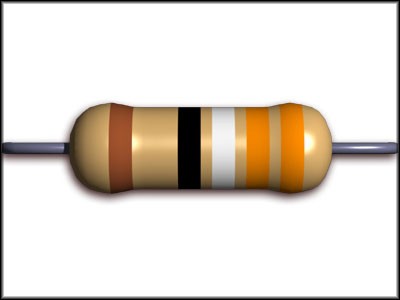A resistor is an object of an electrical circuit that serves to reduce the current strength in it. Resistors are also used to reduce voltage in individual sections and to separate the current into its components. On electrical circuits, resistors are indicated by small rectangles with a pair of leads (one on two opposite sides). Abroad, resistors are represented by a broken line.
Resistors have three main parameters:
- Nominal resistance (resistor ratings).
- Tolerance
- Power dissipation.
The values of the resistors are the value of their nominal resistance, that is, the value indicated by the manufacturer. Nominal resistance is measured in ohms. Resistors are used in almost all industries that contain at least a few electrical devices. This leads to a huge range of resistance values. However, there are resistor ratings that are universal.
It is very difficult to make a resistor with a certain exact rating, so a value such as tolerance is used. For example, if the specified nominal resistance is 10 Ohms, then in fact it will be approximately 9.98-10.1 Ohms. This possible error is called tolerance and measured in percent.

Power dissipation is another of the most important determinants of a resistor. Explain the value of this quantity. The resistor through which electric current passes is constantly heated. Heating depends on the power of the current. Each resistor has a certain temperature limit, after which it overheats and burns. Power dissipation is the value of the electric current power at which the resistor burns out. Like resistor ratings, power dissipation is a constant for each of them. It is indicated by the manufacturer. On electrical circuits, the dissipated power of the resistors should also be indicated. For its designation, inclined, horizontal and vertical lines are used. Special combinations are created from the lines shown on the resistor icon, indicating different power values. Standard values in small circuits range between 1/8 watts and five watts. The power dissipation for any resistor can be calculated from Ohm's law for a section of the circuit. To determine it, you need to know the current strength in the circuit and the nominal value of the resistance of the resistor.

All nominal resistance values are standardized. That is, there are some standard resistor ratings. These values, in turn, are also grouped into series of resistor ratings. For direct current of such series there are 6: E6, E12, E24, E48, E96, E192.
For alternating currents, only series E6 and occasionally E3 are used. The numbers in the names of the series indicate the number of possible denominations in this row. For example, a series of values of E6 implies only the following possible resistances: 1.0; 1.5; 2.2; 3.3; 4.7; 6.8.